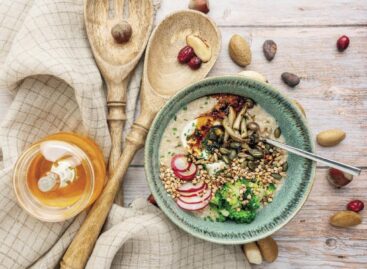Fermentation, regional flavours and price parity drive plant-based innovations
Although first-generation plant-based products haven’t always met taste, texture and appearance expectations in full, there is still strong demand for plant innovations.
This article is available for reading in Trade magazin 2025/2-3
GNT, ADM and Planteneers Food Ingredients First have interviewed experts to learn about the strategies the industry is pursuing, in order to offer more affordable and accessible choices to consumers.
Plant-based trends in 2025
Clean and lean label: health consciousness has always been important motivation in plant-based purchases, but concerns about ultra-processed products have made consumers more cautious, so brands began to simplify their product ingredient lists.
Nutrient-rich plant-based alternatives and price parity: Planteneers sees significant potential in plant-based alternatives fortified with micro- and macronutrients, as well as convenience products made from classic vegetables and grains, while price parity (prices that can compete with animal products) is also a key factor.
Hybrid and blended proteins: growing environmental awareness and economic pressures have put hybrid proteins containing both plant and animal proteins in a good position, and the same is true for blended proteins combining different plant proteins and healthy ingredients. The popularity of hybrid proteins is expected to continue to grow.

Concerns about ultra-processed food have deterred many consumers
Balancing a clean label with sensory experience
Balancing clean labelling and sensory experience is often a huge technological challenge for food manufacturers. For instance the company GNT – known for its plant-based food colours – uses natural ingredients and processes for clean labelling: its “Vivid Orange” colour (used in plant-based meat and fish alternatives) is a simple paprika oil emulsion, while the company’s new brown colour shades (for fine-tuning the red tones of meat substitutes) are made from fresh and caramelised carrots. As the demand for protein-rich products is coupled with ever higher expectations as regards taste and texture, hiding unpleasant flavours and textures is a top priority. Research by ADM has revealed that people on a plant-based diet – including flexitarians – opine both taste and nutritional value are crucial, so the company is always busy developing technology to neutralise the unpleasant side flavours of plant ingredients, while also giving a great taste experience.

Local flavours and global inspiration
There are also opportunities for diversification in the plant-based products category, thanks to growing consumer interest in regional and local flavours. For example Planteneers was present with an Italian plant-based buffet at Future Food-Tech, serving a selection of classic dishes from pizza to tiramisu. As there is growing demand for clean label foods, fermentation-derived proteins such as microprotein and precision fermentation ingredients are playing a key role. The meat-like structure of microprotein offers functional benefits and has substantial nutritional content, making it an ideal ingredient for developing new meat alternatives. ADM is convinced: hybrid protein based products are the future of alternative foods, as they allow consumers to try new protein sources without radically changing their diets. //
Related news
Private labels make plant-based alternatives cheaper
🎧 Hallgasd a cikket: Lejátszás Szünet Folytatás Leállítás Nyelv: Auto…
Read more >Vegan scrambled eggs at 30,000 feet
🎧 Hallgasd a cikket: Lejátszás Szünet Folytatás Leállítás Nyelv: Auto…
Read more >Protein intake: underrated plant sources in the Hungarian diet
🎧 Hallgasd a cikket: Lejátszás Szünet Folytatás Leállítás Nyelv: Auto…
Read more >Related news
Christmas shock in commerce: for the first time, we can pay with bank cards in fewer places
🎧 Hallgasd a cikket: Lejátszás Szünet Folytatás Leállítás Nyelv: Auto…
Read more >Hungarian Confectionery Manufacturers Association: trends in 2025 and prospects for 2026
🎧 Hallgasd a cikket: Lejátszás Szünet Folytatás Leállítás Nyelv: Auto…
Read more >Most grocery chains will be open until noon on December 24th
🎧 Hallgasd a cikket: Lejátszás Szünet Folytatás Leállítás Nyelv: Auto…
Read more >






